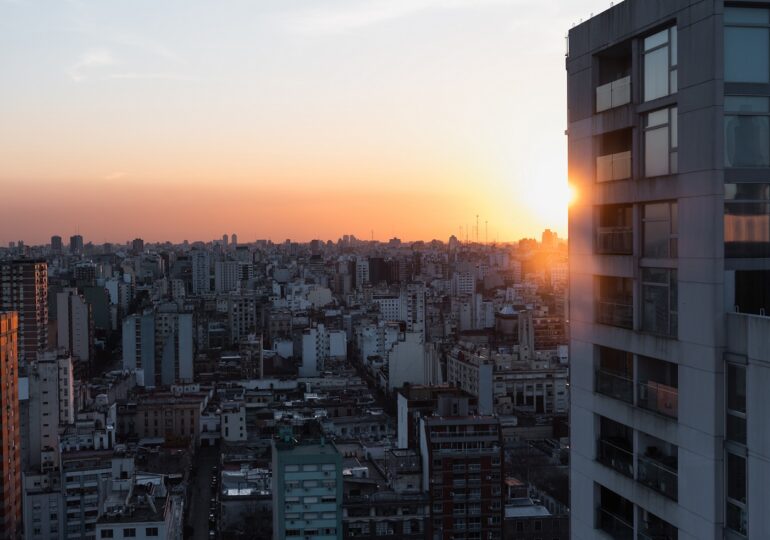Heatwaves are becoming increasingly dangerous, especially in cities where tall buildings and scorching asphalt emit unbearable heat. However, a simple and inexpensive solution could bring a bit of coolness to the huge „urban ovens.”
A study published in the scientific publication Nature Cities showed how applying a retroreflective material on buildings contributed to lowering wall temperatures by up to 2.2 degrees Celsius and reducing air temperatures by nearly 0.15 degrees Celsius, CNN reports.
Reducing building temperatures is very important at street level, where it is felt by pedestrians. "These walls radiate a lot of heat directly towards you," said Elie Bou-Zeid, co-author of the study and professor of civil and environmental engineering at Princeton University.
Cooling these surfaces by 2.2 degrees Celsius would be equivalent to standing in the shade, she added.
Temperatures in cities are significantly higher than in suburbs and rural areas due to the way they are built. Tall buildings, dark-colored roofs, asphalt, and concrete can absorb sunlight and reflect heat back into the environment, creating the so-called urban heat island effect.
Retroreflectors are based on a simple concept: three mirrors forming a corner reflect light back in the direction it came from. The same can be achieved with a bowl-shaped mirror.
Such materials are applied to road signs and bicycles, for example, to make them visible at night to drivers, as well as in running gear. Cats' eyes have similar retroreflectors that shine in the dark when light hits them.
Retroreflective material could be developed in the form of films to be applied to the exterior surfaces of buildings. Considering that the material itself is relatively inexpensive, it could be a simple solution to a phenomenon that is becoming increasingly dangerous as temperatures continue to rise due to planet-warming pollution.
Small-scale versions of this idea have already been tested in the Netherlands and Italy, but there is no large-scale example yet.
Urban designers have begun to implement simple solutions to counteract the urban heat phenomenon, including painting streets white, planting more trees, and creating green roofs.
Streets in Los Angeles have been painted with a white-gray coating to reflect sunlight and keep the air temperature cooler – just as a light shirt will keep you cooler than a dark one in the hot summer sun.
Researchers say this solution is less effective than retroreflective material, which reflects sunlight back towards the sun "and not towards other objects on the ground."
Retroreflective materials also have a disadvantage: they would make winters feel even colder by reflecting sunlight at a time when it is beneficial.
Bou-Zeid said it might be possible to design reflective materials that cancel out the effect when needed. "When it is very hot in the summer, they turn white and reflect a lot back towards the sky. When it is very cold in the winter, they turn black and do not reflect much and absorb most of the (sun's) energy," she explained.
T.D.

